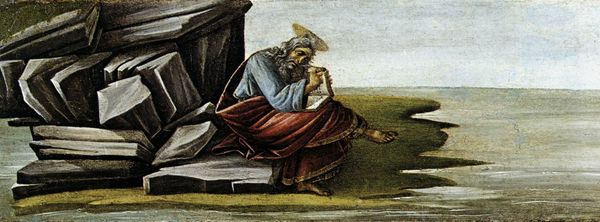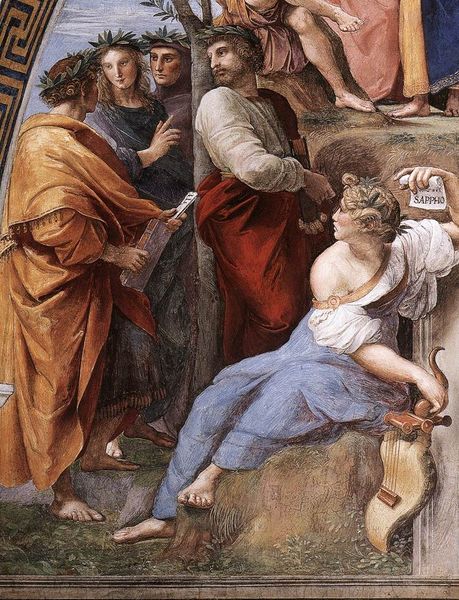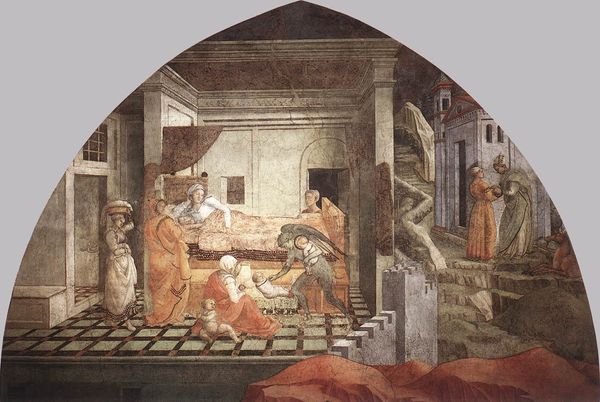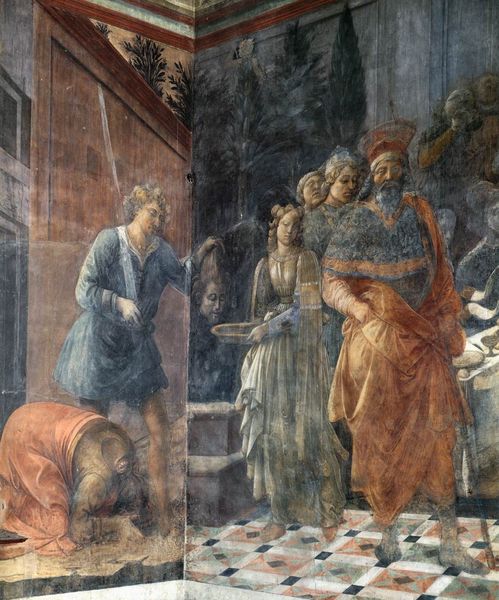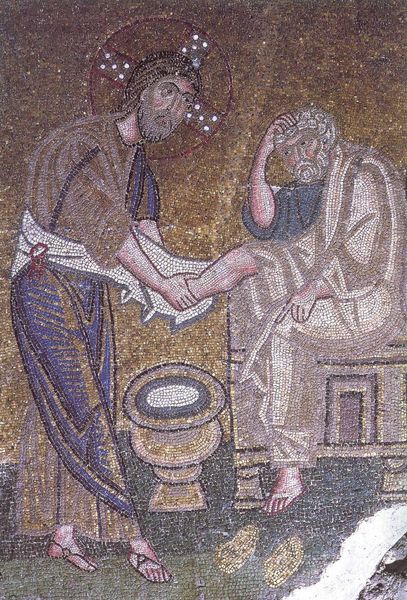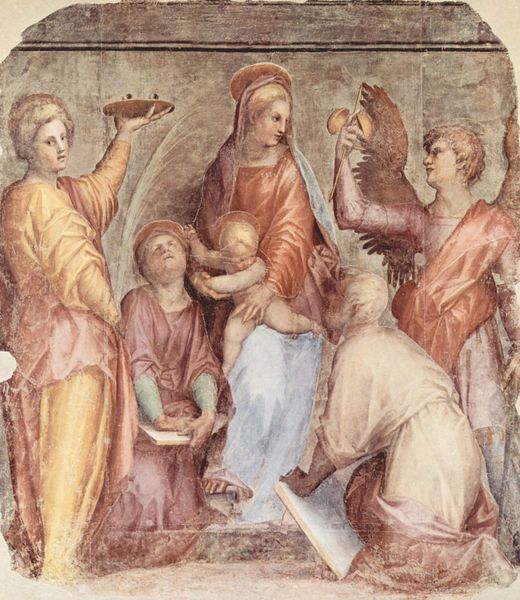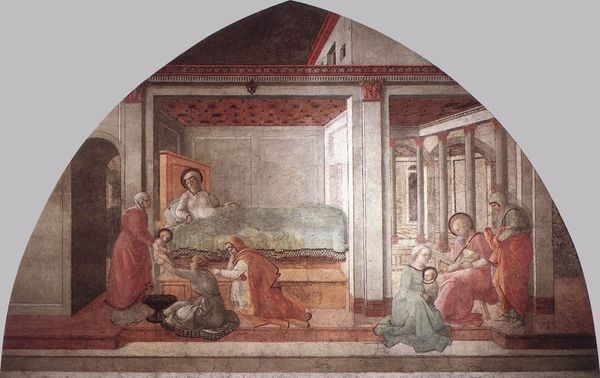
The Extraction of the Heart of St. Ignatius from the Altarpiece of St. Barnabas 1488
0:00
0:00
painting, oil-paint
#
narrative-art
#
painting
#
oil-paint
#
oil painting
#
christianity
#
history-painting
#
italian-renaissance
#
early-renaissance
Dimensions: 21 x 40.5 cm
Copyright: Public domain
Curator: Here we have Sandro Botticelli's, *The Extraction of the Heart of St. Ignatius from the Altarpiece of St. Barnabas,* dating back to 1488, currently residing in the Uffizi Gallery in Florence. Editor: My immediate impression is… intense. It’s stark. The dark background throws everything into high relief, particularly that surgical intervention! Chillingly fascinating. Curator: Yes, quite so. Note the artist's skillful employment of oil paints, which was integral in allowing him to achieve this luminosity, particularly noticeable in the figures’ skin and drapery. It speaks to the increasing refinement of material application during the Early Renaissance. The surface smoothness is exquisite. Editor: Refinement, definitely. And gruesome. It's funny how something painted so beautifully can still make you squirm. But that's the point, isn’t it? To evoke emotion, maybe even a little discomfort about the cost, literally and figuratively, of faith? Curator: It speaks to more than faith, certainly. Botticelli had direct commission by, in this case, the Guild of Doctors and Apothecaries who also supplied pigments and other resources, reflecting the guild's prominence and patronage during the period, underscoring their control over artisanal skills and the marketplace of artistic production. Editor: The power dynamic visible even in the composition. But I see beyond power. Looking at St. Ignatius' face, there's such a serene quality, in direct opposition to the act of extraction happening at his chest. Is this detachment a symbolic element pointing towards the spiritual triumph over mortal body? Curator: Precisely, that duality—body and soul, earthly control and divine intent —were major visual arguments then, manifesting themselves materially through careful execution. Editor: To me, that extraction reads as more than just a surgical act, it speaks also on a deeper level on individual convictions. Curator: Well, looking into this painting reveals not just a visual rendering of a hagiography, but an entire economic ecosystem of Renaissance Florence. Editor: It reminds me to consider our hearts, what we sacrifice and for what? Deep stuff indeed!
Comments
No comments
Be the first to comment and join the conversation on the ultimate creative platform.
